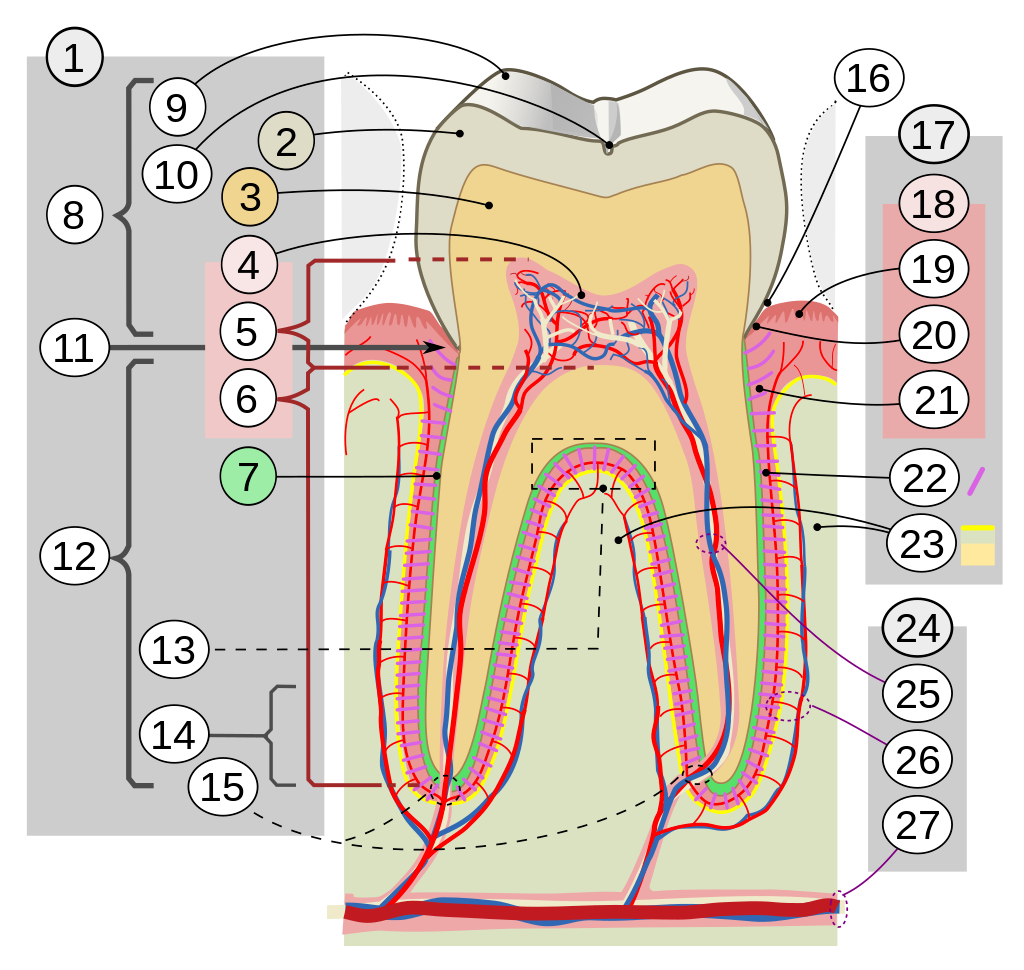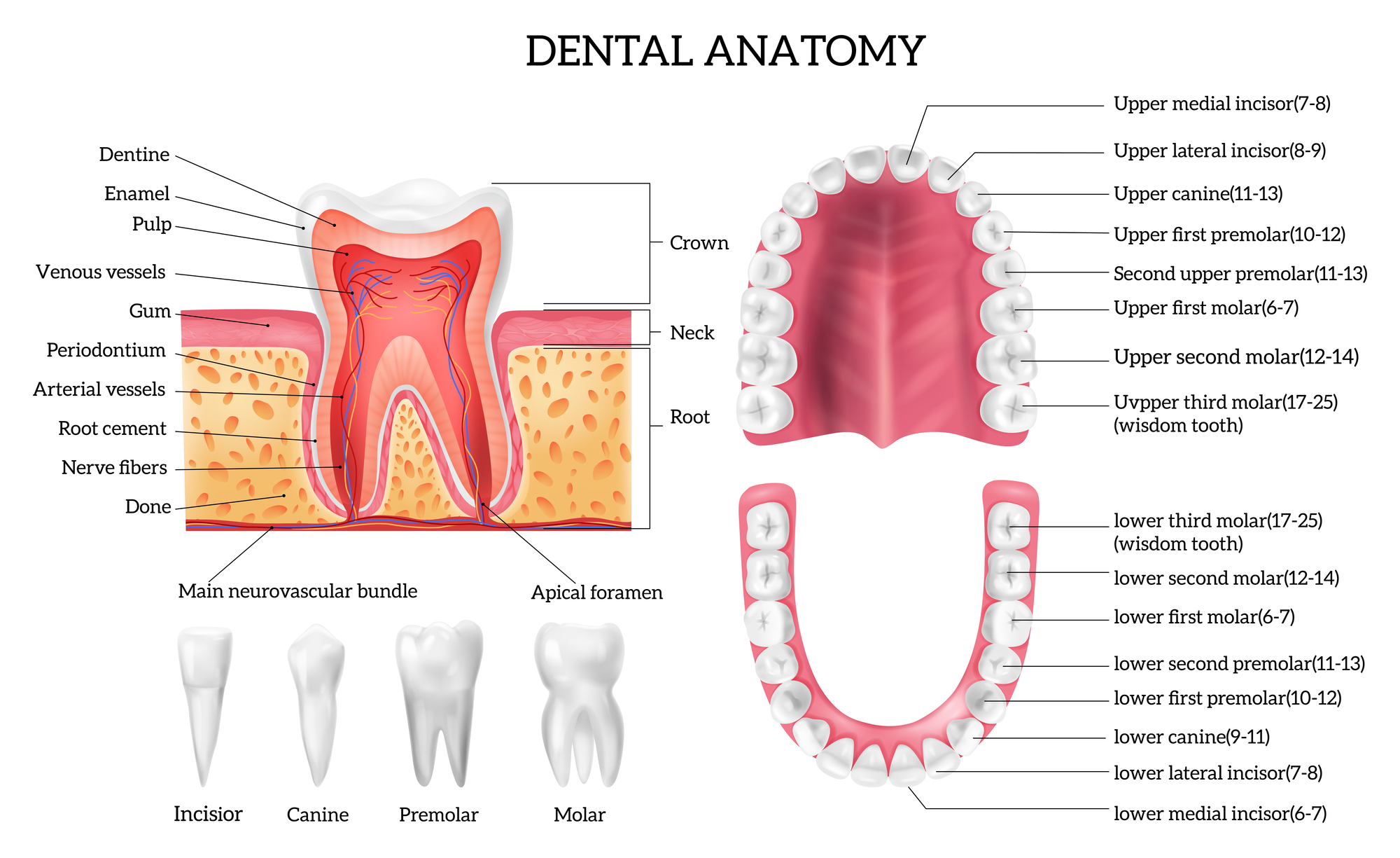Human teeth are the teeth (small, calcified, hard, whitish structures) found in the human mouth. They function in mechanically breaking down items of food by cutting and crushing them in preparation for swallowing and digestion. The roots of teeth are embedded in the maxilla (upper jaw) or the mandible (lower jaw) and are covered by gums. Teeth are made of multiple tissues of varying density and hardness. Teeth are among the most distinctive (and long-lasting) features of mammal species.

1. Tooth
16. Gingival sulcus
17. Periodontium
24. Vessels and nerves:
Humans, like other mammals, are diphyodont, meaning that they develop two sets of teeth. The first set (also called the "baby", "milk", "primary", and "deciduous" set) normally starts to appear at about six months of age, although some babies are born with one or more visible teeth, known as neonatal teeth. Normal tooth eruption at about six months is known as teething and can be painful. Dental trauma refers to trauma to the face, mouth, and especially the teeth, lips and periodontium. The study of dental trauma is called dental traumatology. Among permanent teeth, 16 are found in the maxilla and 16 in the mandible, for a total of 32. Permanent human teeth are numbered in a boustrophedonic sequence.
The maxillary teeth are the maxillary central incisors (teeth 8 and 9 in the diagram), maxillary lateral incisors, maxillary canines , maxillary first premolars (5 and 12), maxillary second premolars, maxillary first molars, maxillary second molars, and maxillary third molars. The mandibular teeth are the mandibular central incisors, mandibular lateral incisors, mandibular canines, mandibular first premolars, mandibular second premolars, mandibular first molars, mandibular second molars, and mandibular third molars.

Third molars are commonly called "wisdom teeth" usually emerge at ages 17 to 25. These molars may never erupt into the mouth or form at all. When they do form, they often must be removed. If any additional teeth form—for example, fourth and fifth molars, which are rare—they are referred to as supernumerary teeth (hyperdontia). Development of fewer than the usual number of teeth is called hypodontia.
Forest & Ray is a private dentist in London (Holborn, Camden) offering a wide range of treatments (basically everything), same-day appointments 7 days a week and affordable prices. The key behind a beautiful smile is self confidence, and success. At Forest & Ray we ensure to help you to the best of our ability. If you place your trust in us, we will make sure you achieve your goals and maintain oral hygiene to the maximum of its capacity. Regardless of any age or condition, we promise painless treatments and a professional team.